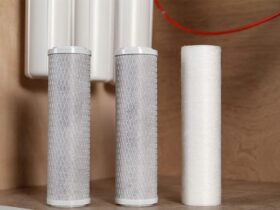Introduction
Gardening can be a relaxing hobby and the people who indulge in it have only grown over the years. However, improving the soil isn’t an easy task. While you can solve things with chemical fertilizers, you run the risk of polluting the soil, destroying your garden’s delicate ecosystem, and doing more harm than good. While you can search for “topsoil near me” and add it to your garden, there are other ways to improve and add nutrients to your soil. Let’s check them out:
The Ways
1. Compost – Compost is probably the first thing that comes to mind when you throw out chemical fertilizers as an option. It can improve your soil by a great margin, add nutrients and make it fertile enough for growing all kinds of plants and veggies. Moreover, you can easily make it in your backyard. To make rich compost you need a lot of nitrogen and carbon-rich material. Grass clippings, foliage, vegetable scraps, and even weeds are rich in nitrogen and can go into the compost mixture. For carbon-rich material, you can add straw, dead leaves, leaf litter, and even wood chippings from your garage projects.
The key to making high-quality compost is to create layers, control humidity and heat. You can start with a few layers of twigs, dead branches, weeds, and grass clippings for aeration. Over that, you can pile up the next layer with a similar composition of nitrogen and carbon-rich material. To mix it well, you need to rotate the compost bin from time to time and also make sure to keep it under direct sunlight. Compost works well with high heat and humidity. Over the next few weeks, you can keep on adding layers with anything you can gather, be it kitchen waste or dead leaves, and keep turning the bin. As the compost turns into a rich black mass after around four months or more, you can harvest it and use it in your garden or yard.
2. Manure – Manure has been used by farmers for thousands of years and still would be in use if not for the population boom of the planet and the rise of industrial farming. It has plenty of nutrients and is high in nitrogen. Moreover, it’s extremely cheap and if you have a farm nearby, you may be able to get it for free. The best place to get free manure would be horse farms. Unlike hatcheries and cattle farms, they don’t make extensive use of manure. You can also source manure from your pets and other animals. However, make sure that they haven’t been fed any plants with herbicides. That can be fatal to many plants in your garden. It’s also a good idea to not use manure excessively. Due to its high phosphate content, manure can easily pollute nearby water sources.
3. Put the worms to work – You can mix in compost in the soil and till it yourself or leave the menial labor to worms. Sheet mulching is one the best ways to till your soil with worms and add plenty of nutrients to it. In this process, you build compost on the surface of the soil and kill existing plants and vegetation with cardboard sheets. Over the sheet, you add alternating layers of nitrogen and carbon-rich organic matter. This layer rich in nutrients invites worms within the soil to dig their way to the top and transport it back to the soil. This allows you to improve the soil structure dramatically adding plenty of drainage and aeration without compromising stability. Moreover, when the worms make their way through the soil, they leave their manure to improve the soil quality. However, this kind of project would take some early planning. You need to start sheet mulching before you add new plants to the garden.
4. Grow cover crops – Cover crops are some of the best and hassle-free ways of adding nutrients to your soil and bring many other benefits. Cover crops like phacelia, buckwheat, rye, clover, and sorghum are great for growing during the off-season. They are quick to grow and leave residues that can be directly added to the soil as mulch or organic matter. They also have strong and fibrous root systems that prevent the soil from eroding even after harvest and promote good soil structure for growth during the spring and summer seasons.
They also improve soil nitrogen content due to their symbiotic relationship with the nitrogen-fixing bacteria – Azospirillum. Some varieties are also great for suppressing the growth of weed during the off-season. If you decide to grow buckwheat as a cover crop you can even pull it off the ground and use it as a layer of mulch for your garden beds during the autumn season.
5. Add organic matter – Three are all sports of organic matter you can add to your soil to pump nutrients into it. If you think that your soil lacks calcium and nitrogen, you can crush plenty of eggshells and till them into the soil. They are also great for keeping slugs and snails away from new plants. Another amazing organic matter that can be directly added to the soil is banana skins. While bananas are full of healthy minerals and great for you, their skin is also rich in minerals and has enough moisture and flesh that can be beneficial to the plants.
They decompose very easily. So, you can just cup them into small pieces and add them to your soil. They also do a great job of repelling aphids. Another material that usually comes out as kitchen waste is coffee grounds. While you can add them to the compost bin, you can also add them directly to the soil for a nitrogen boost.
Conclusion
When you have so many options to add nutrients to your soil, you can effortlessly do gardening or landscaping work with a generous harvest and lush greenery. If you want to add new soil to your projects, you can always search for “topsoil near me”.




























Leave a Reply